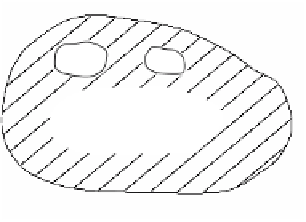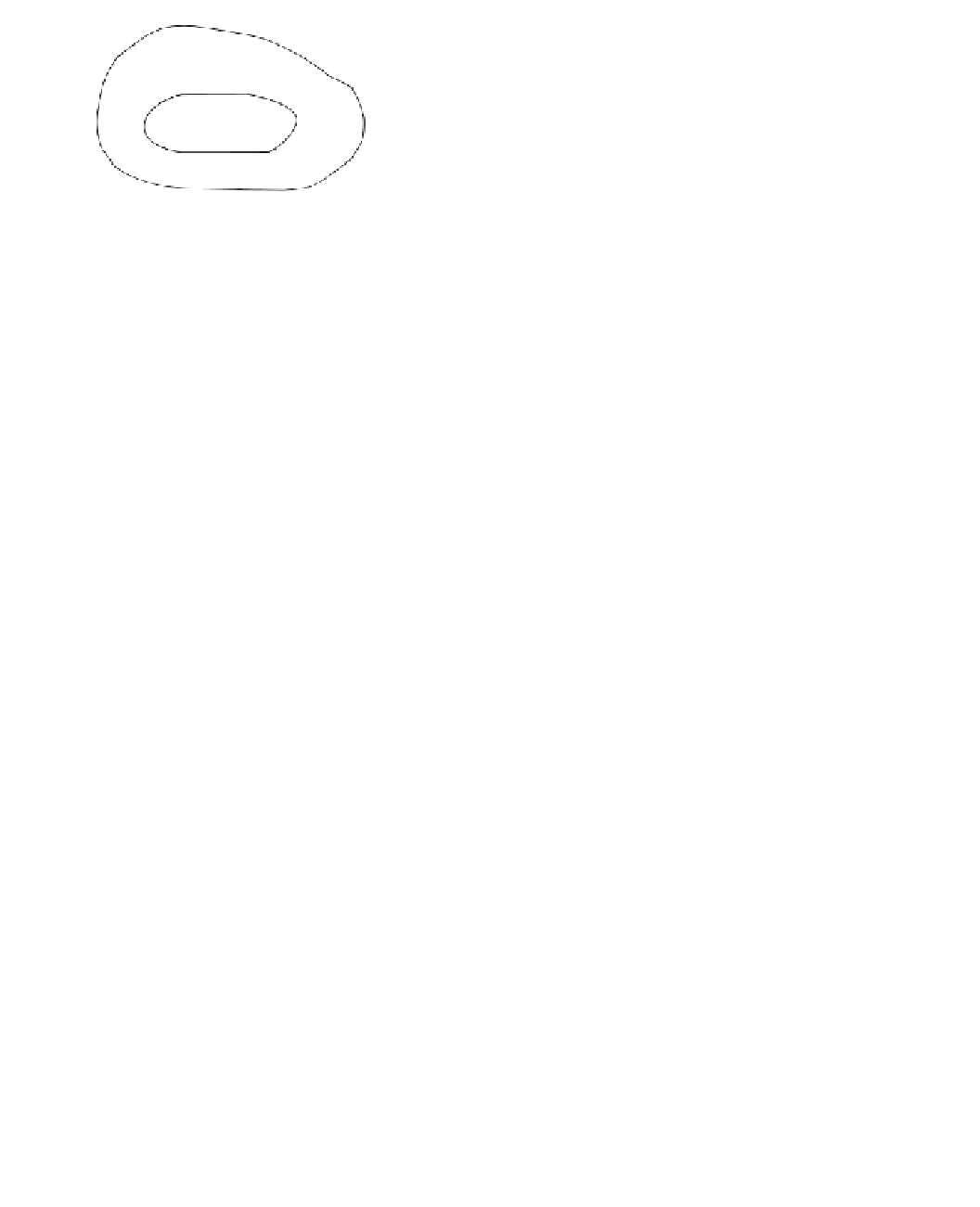Graphics Reference
In-Depth Information
Figure 6.29.
A bordered surface for Exercise 6.6.1.
where the L
i
are components of K. Show that L
i
« L
j
= f, if i π j.
(c)
Prove that a subcomplex L of K is a component of K if and only if ÔLÔ is a com-
ponent of ÔKÔ.
Let K be a simplicial complex and let f : ÔKÔÆ
R
m
6.3.5.
be a map. Prove that f is continu-
ous if and only if fÔs is continuous for all s Œ K.
6.3.6.
Prove Proposition 6.3.3. (Hint: Use Exercise 6.3.5.)
Section 6.5
6.5.1.
Sketch a proof of the fact that a closed nonorientable surface cannot be imbedded in
R
3
by justifying and proving the following:
(a)
A closed curve that meets a closed surface in
R
3
“transversally” must meet it in an
even number of points.
If a closed surface in
R
3
contains a Moebius strip, then there is a curve close to
the median curve of the Moebius strip that meets the surface in only one point.
(b)
What surface has symbol abcda
-1
b
-1
c
-1
d
-1
?
6.5.2.
6.5.3.
Which of the surfaces listed in Proposition 6.5.6 is homeomorphic to the following:
(a) a connected sum of a torus and Klein bottle
(b) a connected sum of a torus and projective plane
Justify your answer.
6.5.4.
The genus of a surface can be defined as the maximum number of disjoint circles along
which a surface can be cut without disconnecting it. Justify this characterization of the
genus.
6.5.5.
If one is going to make computations with a triangulation of a space there are obvious
reasons for choosing a
minimal
triangulation, that is, a triangulation that has the fewest
number of simplices. Let
S
be a surface triangulated by a simplicial complex K. Prove
the following lower bounds on n
i
= n
i
(K), the number of i-simplices in K:
n
0
≥
≥
≥
4
6
4
S
=
S
2
:
(a)
n
n
1
2


